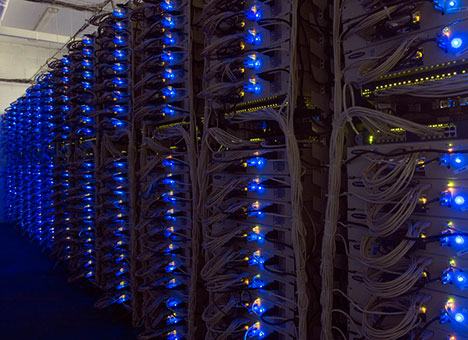The benchmark results represent a greater than ten-fold (10x) decrease in the per-Desktop costs of SAN-based, high-availability virtual desktop infrastructures (VDIs)
FORT LAUDERDALE: DataCore Software, the premier provider of software-based storage virtualization solutions, today announced benchmark results and a research paper which together represent the first practical architecture for SAN-based vDesktops (virtual desktops) in real-world deployments. Using the industry-standard, Login Consultants VSI benchmark, DataCore reported results of less than $35 per desktop for platform hardware and a total system cost of less than $70 per vDesktop for all hardware and software, exclusive of the vDesktop resident Operating Systems and applications. In comparison to previously published industry and vendor results, the cost of the DataCore solution was equal or better than the previously reported cost of storage infrastructure alone.
“I loved this paper! Every other ROI discussion you see is based on the economic benefit a company derives by deploying thousands of virtual desktops – but in the real world, we start with ten, then a hundred, etc.,” states Steve Duplessie, founder and senior analyst, Enterprise Strategy Group. “They will never show you that cost because it’s huge! I appreciate the folks at DataCore shining the light on this and showing that you don’t have to be able to spend a zillion dollars before you can see a return on a VDI initiative.”
Notably, the DataCore benchmark reports these results on a configuration representing 220 vDesktops. In previously published industry reports, thousands of vDesktops were deployed in order to amortize the high initial costs of SAN-based storage hardware. If the DataCore results are normalized against previous results, scaled downwards to represent similar sized deployments, the DataCore results represent a greater than ten-fold decrease in the per-vDesktop costs of SAN-based, high-availability virtual desktop infrastructures (VDI).
“VDI for us is simply an application of what we do, which is storage virtualization,” states Ziya Aral, founder and chairman, DataCore Software. “VDI really underscores the advantages of software-only and particularly portable software virtualization systems or storage controllers. The idea here is that if storage area networks can be implemented without regard to the physical hardware topologies that sit beneath them, and if the needs, or the requirements, of those networks are known beforehand, then it becomes a straightforward proposition to make storage simple.”
In the paper “Benchmarking a Scalable and High-Availability Architecture for Virtual Desktops” DataCore also reported the following:
- That the benchmark was accomplished with the most common and standard hardware, avoiding exotic or proprietary optimizations.
- That DataCore would release future results which showed the architecture scaling to “thousands” of Desktops.
- That the modular nature of the architecture was “self-tuning” as it scaled upward and its modularity avoided the “boot-storms” and other anomalies of large, homogeneous configurations.
- That the architecture had potential for other computing models in which large numbers of essentially similar Virtual Machines were deployed.
Addressing the Practical Economics of Virtual Desktops
All of the paper’s results stressed the portable-software dimension of DataCore’s virtualization products and used the ability of the virtualization software to share the same underlying hardware platform as Hypervisors and the vDesktops themselves. Because DataCore software is portable, it can coexist on the same server platform or run on a virtual machine (VM) or on a multitude of physical servers. Only a software-based infrastructure can truly deliver the necessary agility and economic advantages to make desktop (or server) virtualization a practical reality. DataCore allows the storage infrastructure to abstract itself from device specific limitations, span management and capabilities across platforms, and endure beyond the life of underlying hardware platforms that come and go over time.
“DataCore’s results with lowering the CapEx and cost of entry for VDI are a real eye-opener, and also a prime example of what sets a software approach to virtualizing storage apart – which is the business value it can deliver,” says Mark Peters, Senior Analyst at the Enterprise Strategy Group. “Its approach not only has the obvious ability to deliver both operational effectiveness and long term economic efficiency, but also has the ability to effectively ‘get storage out of the way,’ so that the VDI solution can grow and be supported — over time — in as flexible and as resilient a way needed as business needs change. Equally interesting, and of immense value to users, is that DataCore has also thought through how entry-level configurations can be scaled to thousands of desktops without an administrator ever needing to learn the many intricacies of storage.”
The cost and availability requirements for virtual desktop deployments demonstrate the need for a storage virtualization “software advantage”. The software advantage becomes even more obvious when you consider the many scenarios it works in and the many shapes it takes and will take in the future. “DataCore is not a virtual desktop vendor, instead we are in the business of overcoming the storage cost, performance and availability barriers which have stalled and stopped virtualization deployments,” states George Teixeira, president and CEO, DataCore Software. “Virtual desktop deployments magnify these problems and the results showcase the economic advantage of being portable software. DataCore runs on virtual or physical servers and it can coexist with hypervisors in the virtualization layer. This opens up a new range of possibilities to solve real world and real budget challenges. Hardware simply can’t do that.”
[Download not found]